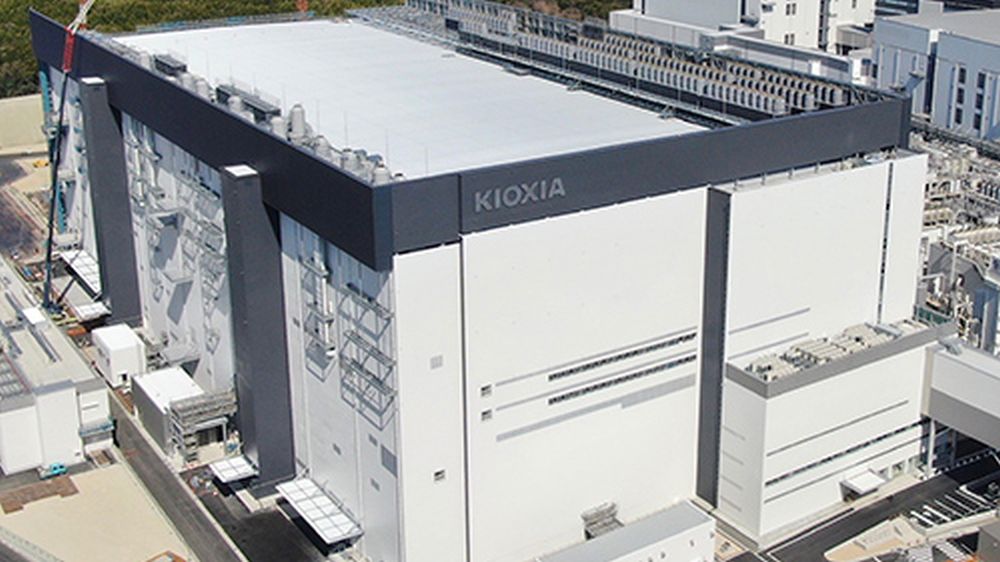SSD prices could fall further as Kioxia and Western Digital edge closer than ever to a merger
Is it the final chapter that could unite two of the biggest names in storage?

It has been a long, protracted journey but it seems that Japan’s Kioxia may finally merge with US-based Western Digital in one of the largest M&A transactions in recent years. Citing sources close to the matter, Japantimes wrote on June 2, that both parties are in “in detailed talks about merging their operations” with the creation of a joint venture that would see Kioxia as the majority owner.
The two firms have been exploring such a move for more than two years as it became obvious that joining forces would help streamline operations and increase joint research and development capabilities. Western Digital and Kioxia already operate two plants together in Japan and complement each other nicely when it comes to their respective product mix.
A recent joint press release announcing the latest 3D flash memory talked up the power of the united companies, saying it “demonstrates the benefits of our strong partnership with Kioxia and our combined innovation leadership” (our emphasis). If that was so obvious back then, it may lead some to question why the merger hasn’t happened earlier in time. There are many reasons, with one being that the NAND market is currently in a bad shape. Indeed, market analyst firm, Trendforce, notes that Q1 2023 saw a drop of 16% in global NAND revenue with Western Digital being one of the worst impacted brands (-21%) compared to a relatively small 6% drop for Kioxia.
Opinion: Why does it matter?
The two companies are pioneers in their own verticals. Kioxia invented the world’s first NAND flash memory back in 1987, while Western Digital has been a household name for more than three decades. It is one of the three remaining hard drive manufacturers in the world; Toshiba Storage is one of these manufacturers and some will see the irony of Kioxia, a former Toshiba company, facing a sibling.
A merger of two of the biggest storage companies in the world will create a giant capable of competing with Samsung, the 800-pound gorilla, with fingers in all things data: SSD, microSD, NAS and much more (but not RAM, yet). In other markets, such a consolidation can go either way, but in tech, it can only go one way. That way will see innovation fostered, which should result in improved performance and decreased costs. For end users (and that includes everything from consumers up to hyperscalers like Facebook or Google), that will, ultimately, mean a lower price per Terabyte.
This will be achieved by moving more swiftly from QLC to PLC (penta-level cell) and adding more layers on NAND chips. R&D may well be the catalyst of the acquisition, with a recent statement by Alper Ilkbahar, Senior Vice President of Technology & Strategy at Western Digital, underlining this as an option.
Speaking at the launch of the aforementioned 3D flash memory, he said: “By working with one common R&D roadmap and continued investment in R&D, we have been able to productize this fundamental technology ahead of schedule and deliver high-performance, capital-efficient solutions.”
Are you a pro? Subscribe to our newsletter
Sign up to the TechRadar Pro newsletter to get all the top news, opinion, features and guidance your business needs to succeed!
Western Digital is strongest in the consumer market with brands such as Sandisk, while Kioxia excels in the business/enterprise/automotive one (it does have an end-user product line but is focussed on the Japanese market). And it is the more resilient B2B market that may have shielded Kioxia from a worst financial outcome.
What have others said about a potential merger?
The genesis of the story happened more than two years ago, during the COVID pandemic. On March 31, 2021, the WSJ reported that both Micron and Western Digital were looking to buy Kioxia in a deal worth potentially $30 billion. Back then, Kioxia was considering an IPO in what was a booming market. By August of that year, the same publication then said that Western Digital and Kioxia were in “advanced talks'' in a $20 billion-plus deal. Then, in October 2021, the WSJ reported that the talks had stalled because Western Digital’s stock price had - by then - fallen by more than 25% and that Kioxia favored an IPO anyway (they had since April 2021).
In 2022, Kioxia attempted to run that IPO with a valuation just above $20 billion and canceled it in October that year (two years after it shelved a dual IPO in the US and Japan). In January 2023, Bloomberg reported that talks between the two companies had resumed. However, industry observers, such as Chris Mellor from Blocksandfiles.com were quick to point out that it won’t be an easy journey. “There would be pain points,” he wrote.
Reuters broke the initial story that started the latest chapter in the tale of the merger between Kioxia and Western Digital, adding some more details to the proposed ownership status (43% Kioxia, 37% Western Digital and 10% existing shareholders).
Go deeper
If you want to expand your knowledge about SSD and NAND, we’ve got you covered: start with what is an SSD, what is an M2 SSD, the different types of NAND (TLC, QLC etc) and all you need to know before you buy an SSD for your business. Check out our best portable SSD buying guide as well and explore the largest and biggest SSD and hard drives out there before plunging into an analysis of SSD vs HDD.

Désiré has been musing and writing about technology during a career spanning four decades. He dabbled in website builders and web hosting when DHTML and frames were in vogue and started narrating about the impact of technology on society just before the start of the Y2K hysteria at the turn of the last millennium.